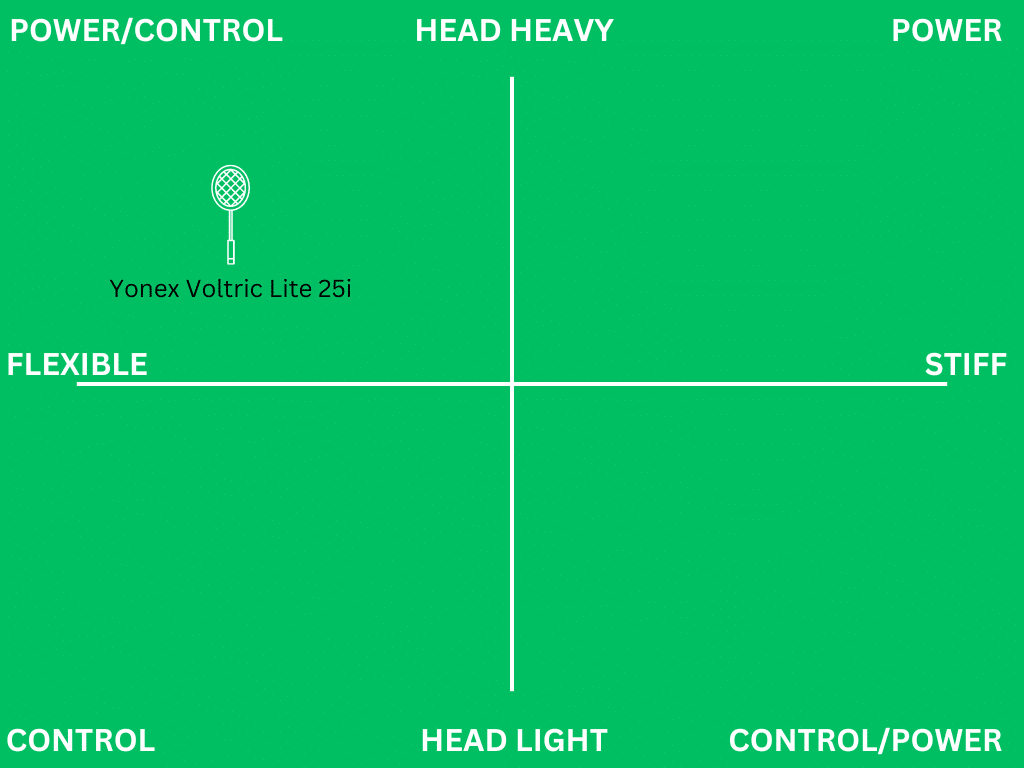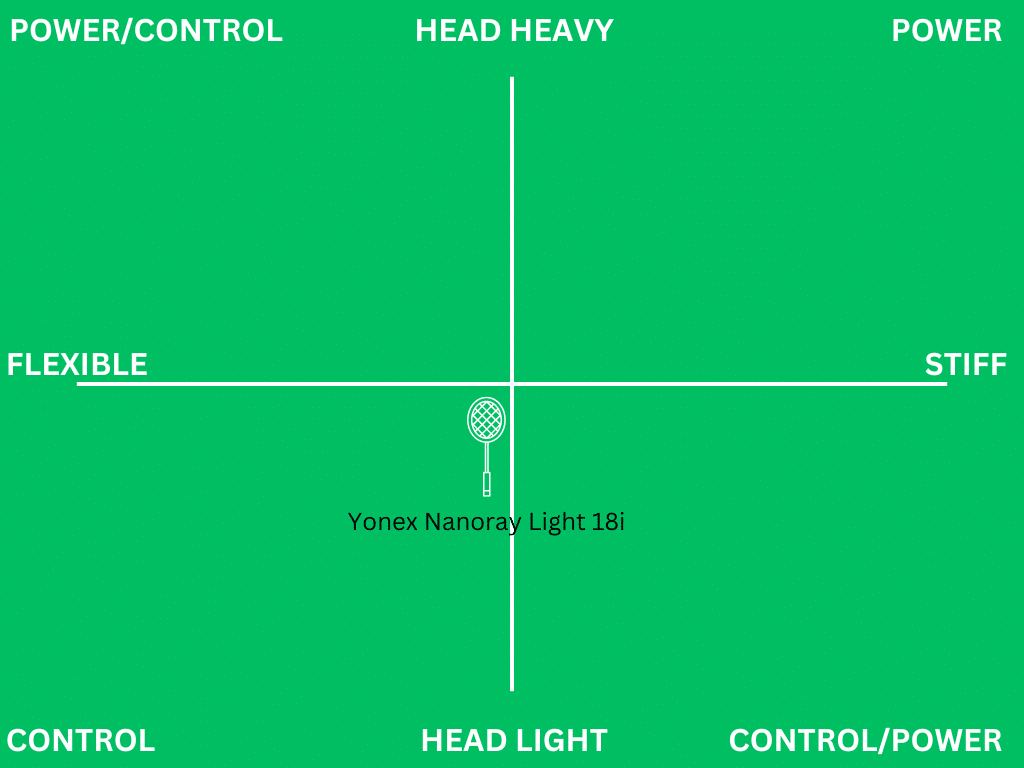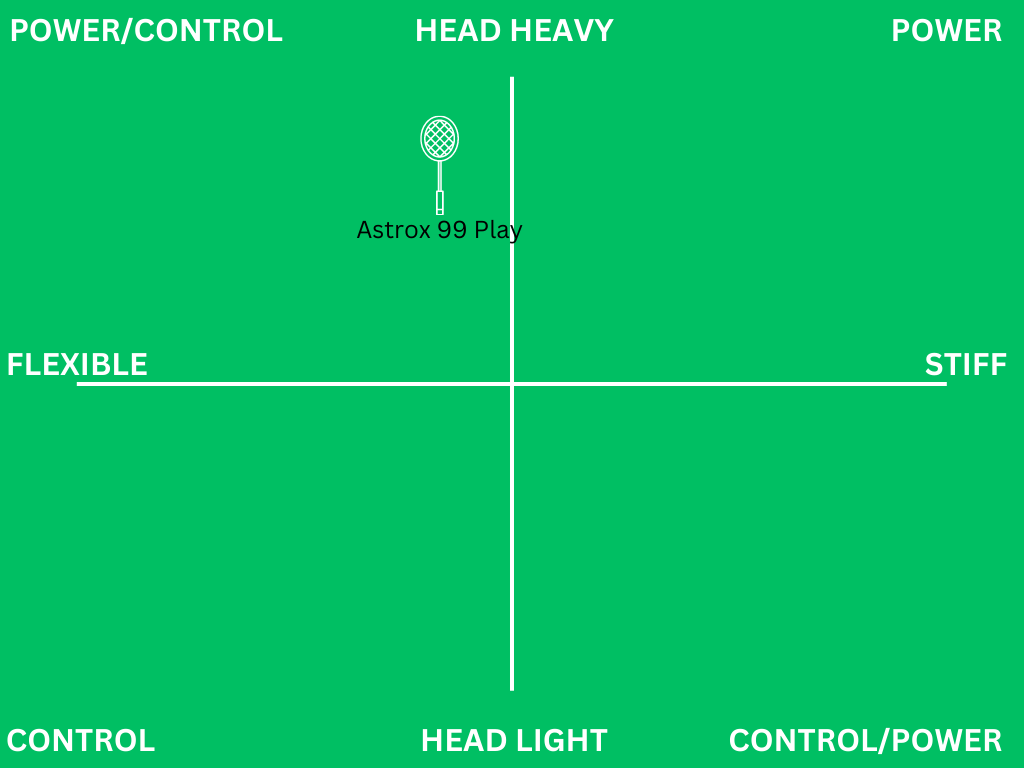I find it hard to review the best budget badminton rackets…
Harder than the high-end rackets, at least. The latter has the best technology and materials available, and the price is less of a concern.
On the other hand, cheap badminton rackets are all about balancing price with value and avoiding a bad deal.
They tend to vary more in quality, there are more brands to compare between, and their descriptions offer fewer specifications, which makes it harder to find a great fit between you as a player and the racket.
Many of these affordable badminton rackets are intended for beginners and there’s a big difference between playing with a power-prone racket compared to a speedster.
A speedy racket allows you to slice holes in the air like a ninja longer before you get tired, whereas a power-based racket helps you smash harder and hit the backline.
If you’d like to dive deeper into picking a badminton racket, there’s your guide but I’ve found that budget rackets often don’t have the information available you’ll need for it to be that useful.
Before we dive into the rackets themselves, there’s something you should know.
A breakdown of the best budget badminton rackets
I’ll only be looking at the best budget rackets that are sold as single rackets rather than including, say, 2-for-1 picnic sets as those will get their own article eventually.
I’ve seen single rackets sold for as cheap as $15 but for that price, all you get is the privilege of telling your friends that you technically do own a badminton racket (and I’m not sure it’s worth the bragging rights). They are usually made with the aim to be sturdy and durable so you can dig them up from your shed for the yearly garden BBQ.
When it comes to badminton rackets, price, quality, and skill level tend to follow each other. For example, rackets for advanced players will often be pricier than those for intermediate players, which will again be pricier than those for beginners.
In my experience, the best budget rackets cost between $40-$80 for players who get on court regularly (as opposed to playing in their garden).
However, within this range, I’ve noticed two subcategories. Oddly enough, many of the rackets around the $50-$60 mark seem to be outdated or older rackets that are hard to place.
In my experience, you’re better off either saving some money and going down to, say, a $40-racket or spending a little more and going for Yonex’s new budget range of their top rackets called “Play” which tends to cost around $75. They offer tremendous value for the price.
Finally, whichever racket you choose, I recommend that you get it restrung as the factory strings and tension tend to be subpar.
Okay, enough with the introduction, let’s look at the best budget badminton rackets.
Hey reader, a quick interruption... I’m experimenting partnering with webshops that sell badminton gear, like Amazon. I’ll include links to buy the gear I review and if you do, they’ll pay me a small commission. That doesn’t change your price and you’ll get more play-tested gear as a result but I thought it was fair to let you know. As an Amazon Associate, I earn from qualifying purchases. I appreciate your support, Aske
The dirt cheap sub-$50 options
1. The Lightweight Power Racket: Yonex Voltric Lite 25I
2. The Lightweight Speedy Racket: Yonex Nanoray Light 18i
The good value for money
3. The All-Arounder: Arcsaber 11 Play
4. The Power Hitter: Yonex Astrox 99 Play
Table of Contents
The best budget badminton rackets
Let’s dive into the rackets.
1. The Lightweight Power Racket: Yonex Voltric Lite 25i

- Pros
- Very lightweight, meaning you’ll feel less tired playing with this racket, especially during longer sessions, compared to a typical racket
- Can help generate extra power in your smash or when hitting the backline
- Able to withstand high string tension, meaning you can “grow” into the racket as you level up your skills
- Cons
- As the racket is lightweight, you might not get as much help with power as with other power-based rackets
Weighing just 77 g. the Yonex Voltric Lite 25i is an ultra-lightweight racket (5U, if you need a reference point, which as confusing as it sounds, is lighter than 4U). Oddly enough it’s built to withstand a string tension as high as 30 lbs. That might not mean anything to you, so allow me to explain.
The higher the string tension the more power you can generate, but in exchange you’ll need to hit the shuttle more cleanly on the strings. There’s a sweet spot where it’s ideal for the shuttle to land and that becomes smaller the higher tension you use.
The more experienced a player is the higher the tension they can command. Some players choose a tension higher than their skill level to hit a powerful shot but when they don’t, there’s a higher chance of the shuttle flying somewhere they didn’t intend.
This racket has a flexible shaft, suggesting that it’s a good fit for beginners as that helps if you haven’t practiced timing your shot well just yet.
With a balance point of 297 MM, that makes this racket head heavy, which can increase the power in your smash or open up variety in your game by helping you hit the backline.
I haven’t tested this racket but you might find that the combination of lightweightness and power will help you get the shuttle back over the net if you’re late to the shot, but you may struggle with precision in exchange.
2. The Lightweight Speedy Racket: Yonex Nanoray Light 18i

- Pros
- Faster swing and easier maneuverability to make you less tired (compared to a power-based racket)
- Able to withstand high string tension, meaning you can “grow” into the racket as you level up your skills
- Very lightweight, allowing you to play longer before getting tired
- Cons
- No help with power
The Nanoray Light 18i is another option in Yonex’s Light (or Lite) i-series, making it super light at just 77 grams (5U). It offers to withstand a high string tension as described under the racket above: choosing a higher tension can help you extract more power but it’ll be more difficult to hit a clean shot and you run the risk of hitting more shots somewhere you didn’t plan.
Fortunately, you can grow into a higher string tension with this racket later on as your skills improve.
In terms of playing style and what this racket will do for you, it’s the opposite of the racket above. Instead of offering power, it gives you a faster swing, easier maneuverability especially around the net, and makes you less tired throughout your games.
It falls in the middle on the flexibility scale, which normally tends to suggest it requires an intermediate skill level. While I haven’t played with this racket yet, it might not be as prominent in this case since you’re less likely to “whip” and smash a lot with this racket.
3. The All-Arounder: Yonex Arcsaber 11 Play

- Pros
- Offers help guiding the shuttle around the court without losing that much power (compared to a very power-based racket)
- Good all-around the court and well-suited for doubles games
- Cons
- Decent during net play but still requires a steady hand
If you’re more experienced, such as a low-intermediate player moving up (or even higher), you might be interested in the Arcsaber 11 Play. It has a tad more power, whereas the Arcsaber 7 Play is slightly lighter and faster.
I’ve been play-testing this racket for a while and I love it. I usually prefer some power in my rackets and even though this is an even balanced one, and I did lose some power, it wasn’t as much as I had expected.
On the other hand, I did feel like I had more control and precision in my shots. I especially like its smash blocks and defensive shots where I found it easy to send the shuttle crawling back over the net without having to adjust my technique much.
For someone like me who isn’t a crazy skilled player, I found that it was decent during net play but still requires you to be nimble which can be challenging if you’re moving at speed to get the shot at the same time.
4. The Power hitter: Yonex Astrox 99 Play

- Pros
- Loads of power
- Cons
- May make you tired during longer sessions
- Not nimble around the net
This slammer is the most powerful of Yonex’s beginner rackets and while some of the other rackets can feel a little confusing, this is a simple one. If all you’re looking for is extra power, this racket is for you.
Despite this being a lightweight 4U racket, you’ll need to be strong to keep swinging this racket around during longer game sessions, especially if you’re playing doubles as those games tend to be faster than singles.
The Astrox 99 Play struggles around the net and during fast midcourt defense duels due to being on the slower side of things in exchange for the power it offers. On the other hand, it makes it easy to whip the shuttle back over the net if you’re late and out of position without needing amazing technique.
It’s one-sided with a full focus on power but offers good value for money if that style of racket is for you. I took it for a spin on court and you can find my experience play-testing the Astrox 99 Play here.
Takeaways when buying the best budget rackets
- $40-$80 is a good budget to find a cheap racket but the middle, around the $50-$60 mark, doesn’t offer as much value as both the cheaper and slightly more expensive rackets
- Most of these rackets are intended for beginners as price and skill tend to follow each other when it comes to badminton rackets
- You’ll gain a lot by restringing these rackets with a better string and higher tension than what they come with
3 comments
I got the Yonex Astrox Lite 27i at 20% off from Yonex’s online website. It’s a great value racket for attacking with a lightweight 5U racket. It’s head-heavier than the Voltric Lite 25i. Good for attacking beginners to intermediate players on a budget. For stronger players on a budget the 4U PLAY rackets would make more sense though. I’m nursing a tennis elbow, so this mid-flex 5U racket is perfect for me … for now. Don’t buy those cheap Decathlon rackets, coz the feel of the Yonex racket is superior to their Perfly models.
Thanks for sharing your experience, I bet others will find it useful
Instead of the Yonex Astrox 99 Play, I will next buy the similarly-priced Felet TJ 1000 Power racket for possibly, even better performance & durability!
My 2-months old, cheap Yonex Astrox Lite 27i frame cracked after just 1 clash of rackets with my friend’s flagship Victor racket, despite being strung at a lowly 24 lbs of string tension. So I guess expensive rackets may mean better durability and value in the long run. This is also evident in my old, high-end Yonex Isometric Tour 300 SP racket (built like a tank) that has withstood multiple racket clashes over like the last, I think almost 30 years! That said, I don’t feel sad breaking a cheap racket.